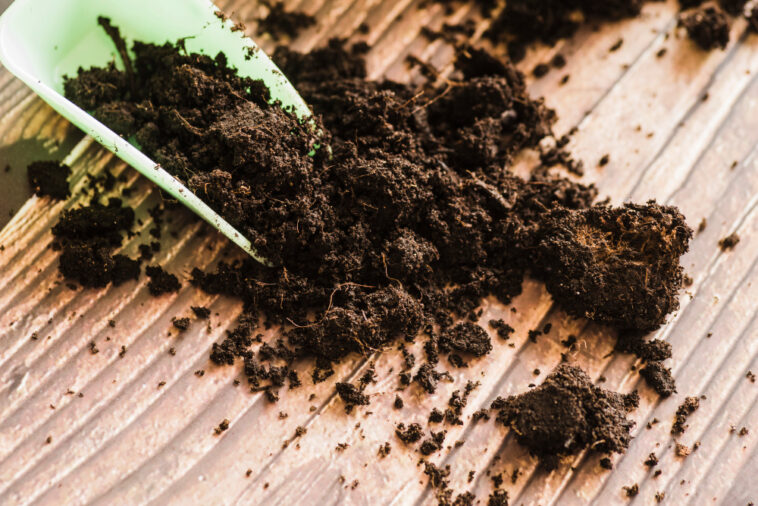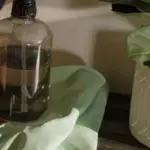Fertilizing your plants is an excellent strategy to encourage greater, more robust, and more rapid growth in your plants. Your plants will not only receive important nutrients from it, but it will also help them recover from damage caused by pests and keep them healthy over the long term.
Because the soil that came with your plant may already include fertilizer, your plant may grow faster at first and then slow down after a few months. Your plant will have used up all of the nutrients that were originally present in the soil, and it will require more sources of those nutrients in order to maintain its current level of growth.
But how should you fertilize your plants, and do all plants require the same amount of fertilization? These are some excellent questions that we will address in our article. We’ll go through the following topics:
- Is fertilizer required for all plants?
- When is the ideal time to fertilize your plants?
- Several types of houseplant fertilizers
- The most effective fertilizer for houseplants
First, we’ll clear up some misconceptions concerning fertilizer. It is essential to have a clear understanding of both what it is and what it is not. The information that you are looking for will be discussed after that.
Read more: When is the best time to water your houseplants?
Table of Contents
Is fertilizer required for all plants?
Because the growth of every plant depends on the intake of nutrients, every plant will, at some point, require the application of fertilizer. However, not all plants require the same quantity of fertilizer to thrive.
For instance, if you have a plant with a sluggish growth rate, such as a succulent, you will not need to fertilize it as much as you would an Alocasia. Alocasias grow quickly, so they need a lot of food and water to get big and strong.
If you fail to feed your plant, it won’t grow as rapidly or it could even stop growing completely. This is because all plants will eventually require fertilizer at some point. On the other hand, plants can be over-fertilized.
This may occur if you fertilize your plant before it has had the opportunity to fully utilize all of the nutrients that were added to the soil at the last fertilization session. Your houseplant will have a difficult time thriving in soil that has been made acidic by the use of an excessive amount of fertilizer over time.
In the following paragraphs, we will discuss the best times to fertilize your houseplants as well as the times when it is best not to fertilize them.
Read more: Smart Gravel for houseplants?
When is the ideal time to fertilize your plants?
We’ve learned that certain plants require less fertilizer than others, but what exactly does it mean? Does this indicate that you give them fertilizer that is of a lower concentration? That is something that could be done, but keeping track of it would be challenging. Increasing the intervals between fertilization cycles is a superior approach.
Plants with a sluggish growth rate
Plants that don’t require a lot of nutrients, such as slow-growing succulents, should be fertilized twice a year, once in the spring and once in the summer. When it comes to fertilizing your slow-growing plants, there is one thing to keep in mind.
Because these plants don’t require a lot of nutrients throughout the year, you should wait at least 3 months before fertilizing them if you got them from a store or if you changed their soil.
For the first 100 days, soil usually contains nutrients; after that, you’ll need to add fertilizer yourself. If you add fertilizer to your soil before the 100 days have passed, there is a possibility that you will add too much fertilizer to your soil.
Read more: The five simplest houseplants for beginners
Plants with a rapid rate of growth
Throughout the year, fast-growing plants such as Monsteras, Alocasias, and Spider plants require a significant increase in the quantity of nutrients they get. The spring and summer months are the best times to fertilize these fast-growing plants at the recommended rate of once per month. This is their growth season, during which time they produce a large number of leaves all at once.
They enter their dormant stage in the fall/autumn and winter, which is a time during which they develop extremely slowly, if at all, and may stop growing altogether. You should refrain from fertilizing your fast-growing plants at this period since they won’t be able to take in many of the nutrients, and this might cause the soil to become acidic.
Several types of houseplant fertilizers
There are a few different types of fertilizer for houseplants to choose from. You may select the fertilizer that best suits your plant care approach. There are a few simpler ways to fertilize your plants that can match your plant care style well, among other more complicated ways to fertilize your plants, such as adding old ground coffee and eggshells:
- Liquid fertilizer
- Fertilizing spikes
- Fertilizing balls
- Fertilizing tablets
We’ll take a quick look at each one and determine whether or not it would be a suitable fit for you.
Liquid fertilizer
The term “liquid fertilizer” refers to a type of fertilizer that is mixed with water. You are actually fertilizing the soil around your plants whenever you water them. Your plants will benefit from this method of fertilization, which does not require any more work on your part other than continuing to water them.
On the other hand, there are two drawbacks: first, you have to actively remember to add fertilizer to your water, and second, the dose is the most important thing. It is simple to apply an excessive amount of fertilizer to your water, which might make it challenging for your plant to maintain a healthy state. When in doubt, always refer to the fertilizer’s directions.
Read more: Does the direction of the sun affect your houseplant?
Fertilizing spikes
Fertilizing spikes are short sticks that are inserted into the ground to add nutrients. The vast majority of these spikes will provide your plant with nutrients for up to one hundred days. When you water your plants, they will take in the water and then release the nutrients they have stored in the soil.
They are referred to as slow-release fertilizers, the same term that is used for the fertilizing balls. You only need to fertilize your plants using this method once, and then you may forget about it for around three months.
One disadvantage is that it is easy to overlook. To avoid overfeeding your plant, don’t forget about the spikes that you inserted into the soil a few weeks ago and add another one.
If you’re going to use these spikes, set reminders on your calendar to add spikes to the soil and keep to your timetable. This will increase the likelihood that you are providing your plant with the appropriate quantity of nutrients.
Read more: Do different kinds of soil make a difference for the health of your plant?
Fertilizing balls
Fertilizing balls are quite similar to fertilizing spikes in the sense that you only need to apply them once and then you can forget about them for an extended period of time. In addition to this, they work as a Slow-release fertilizer, which brings with it the same advantages and downsides as the spikes. Having said that, there is more.
These fertilizer balls are quite tiny and should be incorporated into your soil. This has the advantage of ensuring that your plant receives nutrition from multiple locations within the pot, rather than just one. On the other hand, this also implies that it becomes somewhat more complicated when the nutrients are depleted.
You must either dig holes in your container or replenish your soil. To summarize, it will provide your plant with more constant nutrition, but it will also require more effort from you.
Read more: Bottom Vs Top Watering: Which Is Better For Your Plant?
Fertilizing tablets
Between liquid fertilizer and fertilizer balls or spikes, fertilizer tablets are an excellent option for those looking for a middle ground. The fact that these tablets can be dissolved in water makes it very simple for your plants to take in the nutrients they contain. On the other hand, they are known to be far more durable than the majority of liquid fertilizers, making them comparable to spikes and balls. Because of the pills’ high concentration, you should expect them to deliver a powerful punch.
The tablet known as “instant plant food” is one of my favorites. They are concentrated pills that, over the course of several months, can provide sufficient nutrition for one large plant or numerous smaller ones. Because you dissolve these tablets in water, your plants can absorb the nutrients fast, allowing you to aid your plants as soon as possible.
The most effective fertilizer for houseplants
We’ve looked at four distinct forms of houseplant fertilizer that are simple enough for beginners to apply, but which of these options is the most effective? The truth is that they are all excellent methods of fertilizing your houseplant.
The option that is the most convenient for you is the best option. First let’s talk about the kind of plant owner you need to be in order to use each of these three fertilizers properly, and then we can figure out which one is best for you.
If you remember to take care of your plants on time and take great satisfaction in discovering the precise blend of items to assist your plants grow, liquid fertilizer is ideal for you.
You enjoy experimenting with new sorts of plants and, if you had the opportunity, you would want to care for your plant every day. You have a particular fondness for plants from tropical regions. Fertilizing spikes are ideal if you frequently neglect your plants for at least two weeks at a time.
You either purchase plants that require little care or have discovered techniques to reduce the amount of attention required by plants that require more care. During the growth season, you should pay attention to the point at which your plant begins to develop at a slower rate.
Fertilizing balls are ideal if you want to ensure that your plant is always comfy in its pot and don’t mind repotting it once a year to do this. You don’t have time to care for your plants every day, but once a week or every two weeks, you prefer to devote a little more time to them.
If you have a lot of bigger plants and often forget to fertilize them, fertilizing tablets are the right solution for you. Your plants will experience longer-term growth as a result of the fertilizing tablets, and they will also have an easier time absorbing the nutrients, which will allow them to do so more swiftly.
Read more: Can you water your houseplants with tap water?
Conclusion
It is critical to fertilize your plants if you want to ensure that they remain robust and healthy over an extended period of time. When it comes to taking care of your plant, the two most important things to pay attention to are the amount of water it receives and the amount of sunlight it receives. Because of this, it is easy to forget to fertilize your plants.
However, if your plant does not receive the proper nutrients, it will not be able to expand its size or recover as quickly after being damaged or attacked by pests. Nutrients are essential to the continued existence of all living things, including people and plants, and (ideally) to their growth.
I appreciate you taking the time to read my article. I really hope that this information is of use to you in maintaining the health and beauty of your plants.
Frequently asked questions
Do all houseplants need fertilizer?
All plants require fertilizer in some form or another at some time. To keep your plant growing strong and healthy, you’ll need to apply fertilizer when the soil it’s in runs out of nutrients (around 100 days).
When is the best time to fertilize my houseplant?
The spring and summer months are ideal for fertilizing your indoor plants, so do it then if you can. Fertilizer should be applied to slow-growing plants twice: once at the beginning of the spring growth season and once at the beginning of the summer growing season. During the spring and summer months, you should fertilize fast-growing plants once every single month.
What is the best fertilizer for your houseplants?
Your indoor plants will thrive with any type of fertilizer you choose to use. The ideal one to use is the one that works best for your plant care style. Fertilizing sticks or balls are an excellent option for people who do not have a lot of spare time. You may also use liquid fertilizer on your houseplants and mix it in with the water you use to water them.
Read more: Can you take a houseplant outside?



